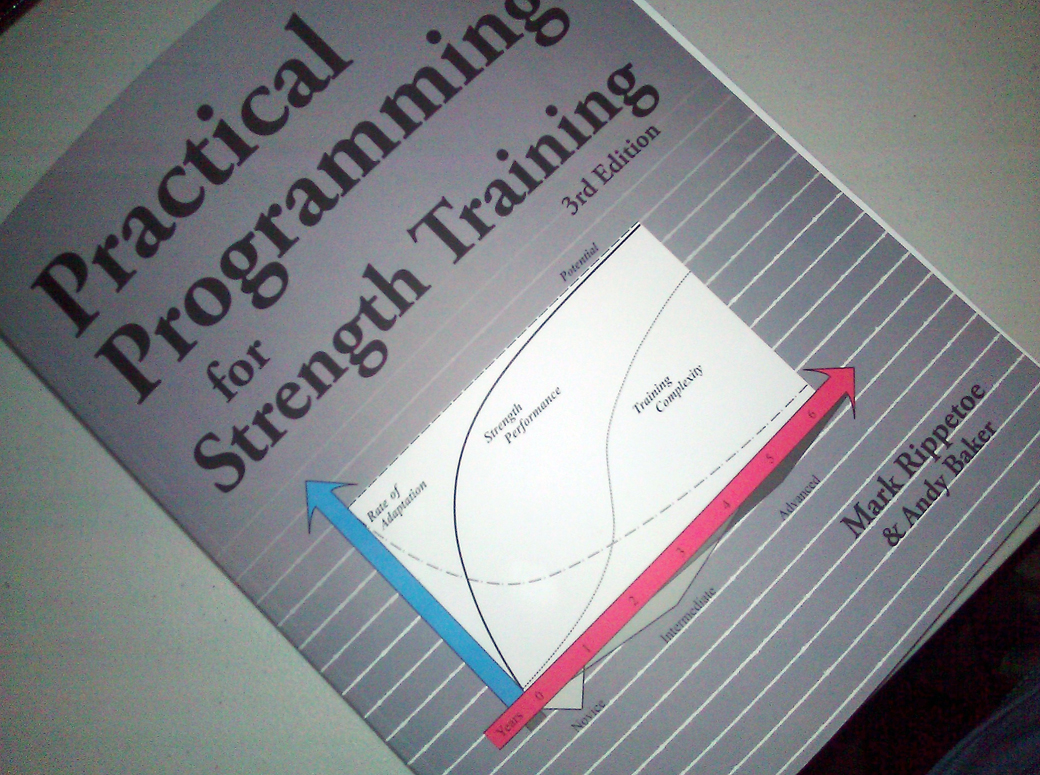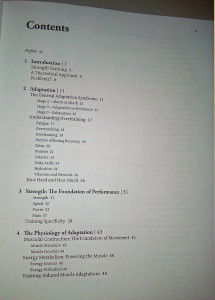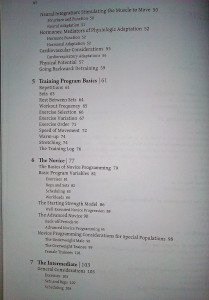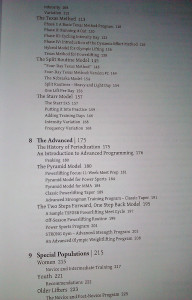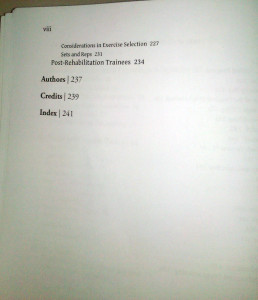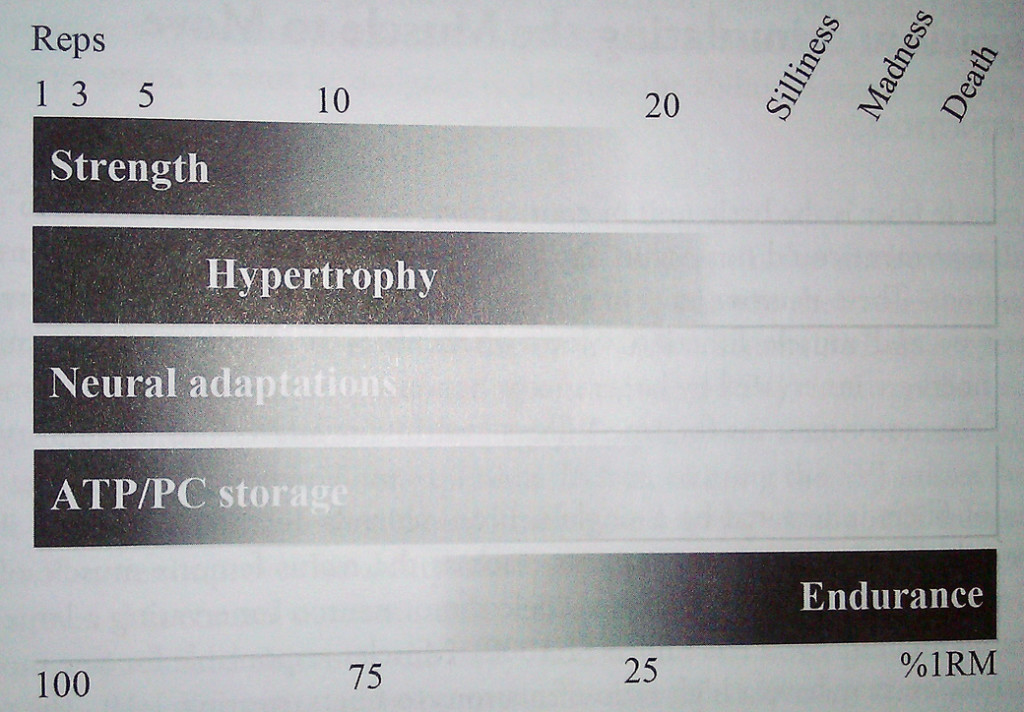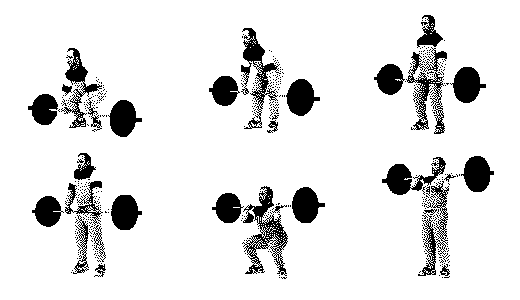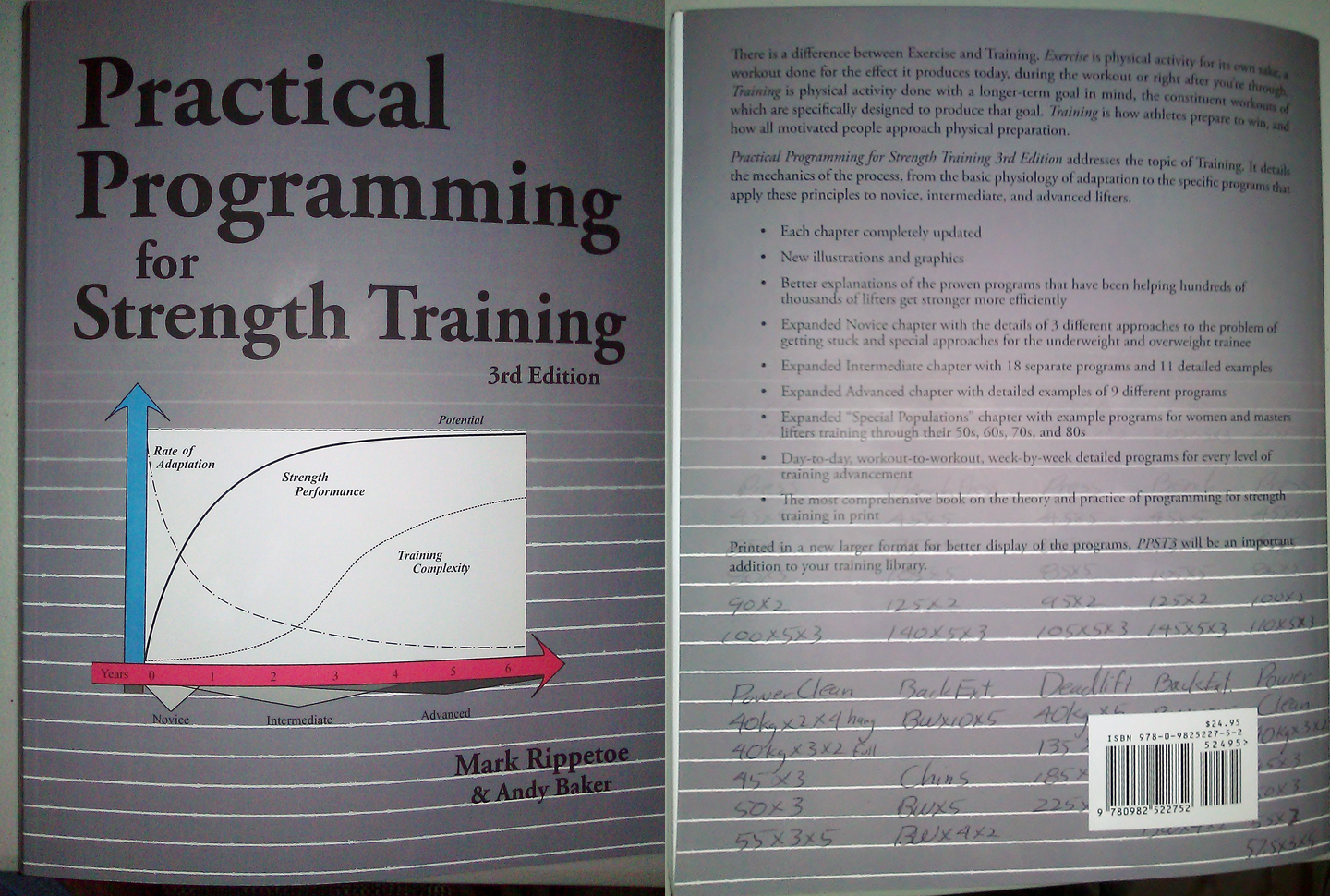Mark Rippetoe just released the third edition of Practical Programming for Strength Training. As a Starting Strength
advocate, and a certified Starting Strength coach, frankly, buying and reading this book was a no brainer.
If you just want to know my overall recommendations, skip ahead to the bottom.
Admittedly, this is a very long review, if you’d like a (slightly) summarized version, without pictures or program examples, you can watch this article instead of reading it by checking out the following video:
Third Edition Table of Contents
The third edition is a vast, vast improvement upon the second for those of you who intend to use the material to make changes to your own training. As in previous editions, the book starts with a cursory discussion and analysis of exercise science as a whole. While I could easily spend several paragraphs explaining the first five chapters, I’d rather just show you the table of contents so you can see for yourself.
Disclaimer
I do not own any of the content pictured in the remainder of this article unless explicitly stated otherwise. All material belongs to the Aasgaard Company and was taken directly from Practical Programming, 3rd Edition, Mark Rippetoe, 2014. Copyright Disclaimer Under Section 107 of the Copyright Act 1976, allowance is made for “fair use”, including non-profit, educational or personal. No copyright infringement is intended.
What’s Different? What isn’t?
So… what is different in the third edition of Practical Programming you ask? We’re going to start with what is not different.
Skip ahead if you’re familiar with the Starting Strength ideology and/or methodology.
The Starting Strength model of programming for strength training relies upon several foundational principles. They haven’t changed from previous editions, but they are nonetheless wholly critical to understanding the rest of the book.
General Adaptation Syndrome
The first is that of the General Adaptation Syndrome (GAS) by Hans Seyle. For our purposes here, I’ll let Rippetoe himself describe this general process of adaptation:
Stress is any event that produces a change in the physiological state of the organism. Stress disrupts homeostasis, the stable physiological environment that exists within the organism. Recovery from the stress event is the organism’s way of perpetuating its survival, by returning to its pre-stress condition plus a little more, just in case the stress happens again. This adaptation to the stress is the organism’s way of surviving in an environment that subjects organisms to a variety of changing conditions.
~Mark Rippetoe, Practical Programming for Strength Training 3rd Edition, 2014.
Described above is the process by which we actually get stronger. First, we are introduced to a stressor, the weight; second, our body responds by recovering from the damage of this stress, through nutrition, sleep, and other mechanisms; and, third, our body rebuilds itself even stronger in order to prevent the same stress from damaging us again in the future. Over time, in this manner, the body slowly builds strength and muscle in response to the damage caused by lifting weights. As long as heavier weights are being used, or more volume is done, or some important variable is increased, the workout constitutes a “stress” to which the body will adapt.
The Training Advancement Continuum
As far as I am aware, Rippetoe and Kilgore pioneered the concept of classifying trainees based on their particular level of training advancement. Training advancement simply refers to the rate at which the trainee can adapt from a given stimulus. Though simple, this ingenious definition differentiates novice, intermediate, and advanced athletes in the following way:
The Novice Athlete:
“…a trainee for whom the stress applied during a single workout and the recovery from that single stress is sufficient to cause an adaptation by the next workout.”
~Mark Rippetoe, Practical Programming for Strength Training 3rd Edition, 2014.
In short, a novice is someone who can do a workout, recover from that workout and simultaneously get stronger from that workout, all in time for his next training session only a few days later. The most important conclusion to draw from this is that a novice wastes his time engaging any program which calls for anything less PRs on a workout to workout basis. I am not suggesting daily maxing, and neither is Rippetoe, but the novice CAN and, indeed, SHOULD set PRs every time they set foot in the gym in some form or another.
The Intermediate Athlete:
An intermediate trainee is one for whom the stress-recovery-adaptation cycle takes a full week. Why this seemingly arbitrary distinction? Unlike the novice, the intermediate trainee cannot recover from workout to workout anymore. Similarly, it is unnecessary for him to embark upon programs that call for PRs with a monthly frequency (or longer). He is capable of producing the stress-recovery-adaptation response inside of one week. Many common cookie cutter, internet strength programs do not employ programming that is appropriate for this level of training advancement. Like the novice, the intermediate trainee wastes a great deal of time engaging any program which doesn’t allow him to set the weekly PRs he is capable of.
The Advanced Athlete
The advanced athlete is one for whom a monthly periodization, or longer, is required in order to effectively produce the stress-recovery-adaptation response. Despite the fact that most powerlifters are actually novices and intermediates, most widely available programs on the internet are actually designed for advanced powerlifters.
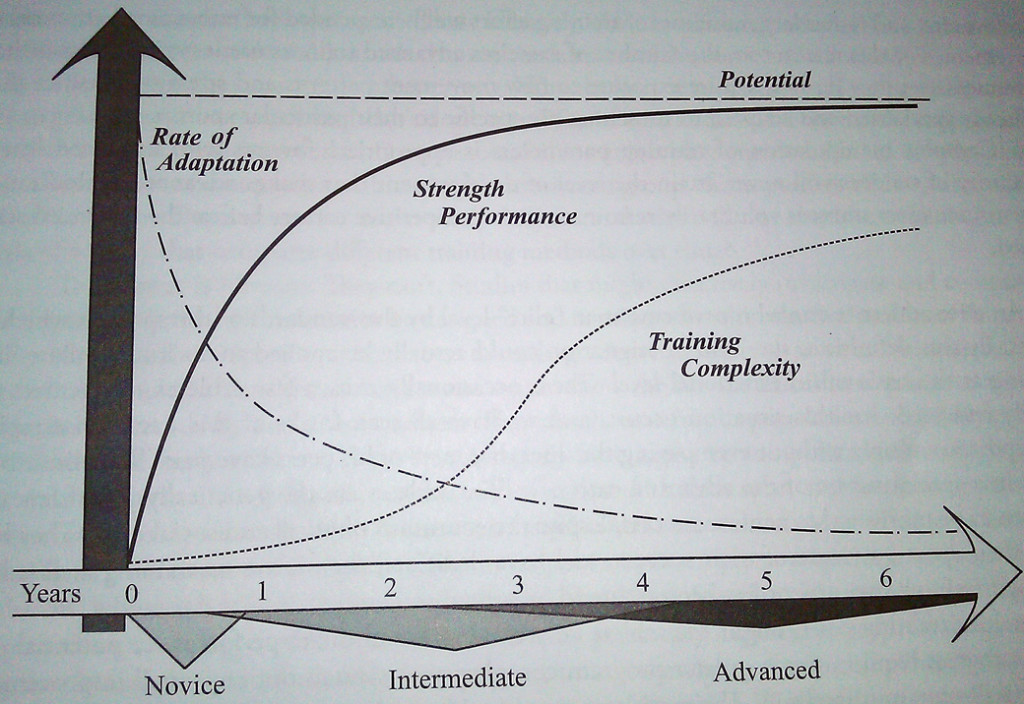
The more advanced a trainee becomes, the more complex his training becomes. Complexity for complexity’s sake is foolishness.
Keep in mind, this is a continuum. Some “early stage” novices might only need 24 hours to recover. Some “late stage” novices might need 72 hours. The more advanced the athlete becomes, the longer the periodization must be. There are some Olympic athletes who only peak and produce PRs once every four years.
You might have noticed that there wasn’t a single poundage number mentioned with regards to training advancement. This is because your strength levels do not determine your training advancement. For that matter, neither does your training age. It is very possible for gifted athletes to be novices and/or intermediates despite very impressive competitive numbers. Likewise, it is possible to waste 10 years doing unproductive body part splits and still be a novice despite a decade of experience under your belt. Using Rippetoe’s definition, training advancement depends on rate of adaptation and nothing more.
General Exercise Science
The first five chapters of the book are devoted to general concepts about exercise science. While I could easily devote an entire article to each of the topics covered in the book, if you’re looking for specifics, take another peak at the table of contents up above.
In general terms, these chapters cover the absolute fundamentals of recovery including basic nutritional tenets, sleep, and a whole lot more. Specific physiology is discussed including, but not limited to, how muscles are constructed, how muscles actually work, hormones and their response to training as well as neural adaptation and energy metabolism. Genetic potential is also covered.
While these topics are all given their proper due, this is not a physiology textbook. I would personally say that the book delivers a “primer”, if you will, on these very important subjects. If you’re looking for a non-intimidating, non-textbook way to educate yourself on the basics of these topics, Practical Programming is a good start.
Perhaps more importantly, the first five chapters touch upon on the actual nuts and bolts of training programs. Sets, reps, rep ranges, time between sets, volume, intensity, and all of the other important parameters that we must manipulate to create particular training effects are analyzed and detailed. This information is literally invaluable when it comes to program design. You must know this information to intelligently construct powerlifting training cycles. Again, while this text is not a comprehensive resource on this material, it will provide you with the necessary information to master the fundamentals in an easily digestible way.
Powerlifting Programs
Before I get into the meat and potatoes of the powerlifting section, understand that Practical Programming is not a powerlifting book in the strict sense. Practical Programming, 3rd edition, is a strength training book. As such, there are copious examples of how to use various intermediate and advanced training models for a variety of sports including but not limited to: MMA, Throwing, Olympic Weightlifting, Bodybuilding/Physique, Football, and running. If you’re interested in those programs, they’re there in the book for you. We won’t discuss them here on PowerliftingToWin.com.
The 3rd edition of Practical Programming makes its greatest improvement over prior editions with its use of specific programming examples. Not only are actual athlete training logs used, but the theoretical training models that are discussed get put into context using actual example programs that contain real numbers, percentages, sets, and reps.
Novices
In one of the most needed improvements, the novice section of Practical Programming finally added clarifications on special populations. For whatever reason, people all over the internet have associated Starting Strength programs with “GOMAD”. A lifter who is doing “GOMAD” is drinking a full gallon of milk per day (hence the acronym). In Practical Programming, different and specific diet recommendations are given for the overweight novice, the underweight novice, and women. In fact, the book even includes two sample diet plans!
Rip’s famous Starting Strength Novice Program is as follows:
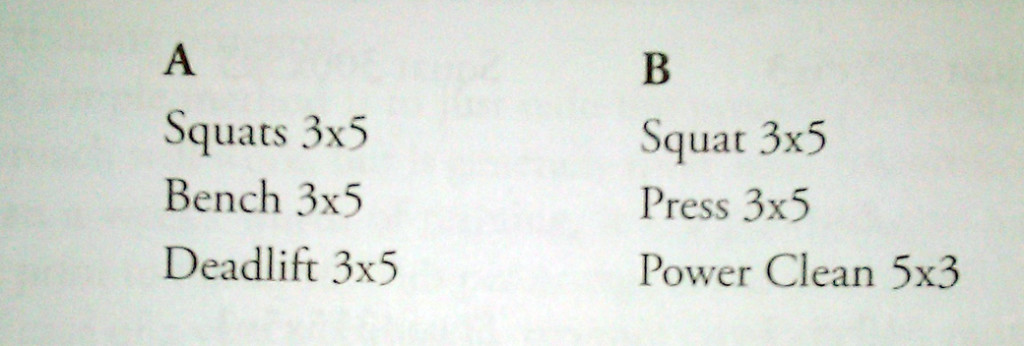
Programming wise, quite a few new tools are deposited into the novice’s toolbox. Rip details when a trainee should: switch from the standard 3×5 to a single top set of 5, implement backoff sets, and even make use of 3×3 instead.
Intermediates
The intermediate section has so much new information for powerlifters that I frankly cannot cover any one piece of it to any great depth. For example, there are EIGHTEEN programs now provided in this chapter with eleven specific examples given. We’ll discuss a few of the highlights.
Most people have seen the now infamous Texas Method:

However, in the 3rd edition of Practical Programming, the above is program is differentiated as “Phase I” of the Texas Method. Lifters are provided full details on when, and how, to switch over to Phase II in order to continue progressing for as long as possible. Very specific examples are used.
Keeping my personal feelings about the Westside Barbell Method aside, Rippetoe also explains when it is appropriate to shift away from the basic Texas Method model and start incorporating the dynamic effort method. In fact, a full progression from the Texas Method to using Westside is detailed. All of this is done while keeping the programming in an intermediate context. For those of you who are interested in Westside, but want to keep it a bit more simple because you’re a raw lifter, you’ll definitely enjoy this section.
Additionally, Rip also discusses how to break Texas Method into more of a traditional 4-day split. 4-day split examples are given using the basic Texas Method with volume earlier in the week and intensity at the end of the week. 4-day splits that feature a more balanced volume distribution are also discussed, however.
Finally, Rip discusses the extremely popular Heavy-Light-Medium model first introduced by Bill Starr’s 5×5 programs (including the infamous Madcow’s). Program examples and organizations specific to the sport of powerlifting are discussed in-depth.
Advanced
The “advanced” chapter is nearly as improved as the intermediate chapter.
In the first example, Rippetoe discusses an 8-week Pyramid model. The pyramid incorporates a 4 week accumulation block, a 3 week deloading and transition period, followed by an intensification and peak in the 8th week. As with all the other chapters, specific examples with numbers, reps, sets, and assistance exercises are given.
Traditional western periodization is also discussed. This is the type of periodization made famous by the great Ed Coan. Typically, you spend a few weeks doing sets 8 until you set a 8 rep PR then you do the same thing with 5 rep, 3 rep, and 2 rep sets. The whole thing culminates in a single on meet day.
Matt Reynolds of STRONG Gym also chimes in to provide a fantastic 14 week meet prep cycle based on traditional periodizations ideas from Russian scientists Anatoliy Bondarchuk and Yuri Verkoshansky (some of the greatest exercise scientists of all-time).
Of all the templates discussed in the advanced section, the most interesting to me was the “Two Steps Forward, One Step Back Model”. Based on work originally done by Mike Stone, this is a simple monthly periodization that produces a PR at the end of every four weeks. In my opinion, this is the perfect bridge between the Texas Method and more advanced models. Remember, training advancement exists along a continuum. Why set PRs every 12 weeks if you can still do it every month?
Special Populations and Women
Practical Programming gives attention to a variety of “special” populations including: injured trainees, older folks (50+), and children. Most of this information is not directly relevant to powerlifters. Those of you who are dealing with rehab will find the injury information interesting. And, perhaps, masters lifters will be able to take away from the advice aimed at older folks. However, most of the advice for older folks is aimed at novices.
One of my favorite quotes in the entire book had to do with women. I’ll paraphrase it here, “Women are not a special population. They are half of the population”. That’s so true. In way too many circumstances, people feel the need to inundate women with lectures on how lifting weights “won’t make them bulky”. In my experience, this is a losing battle 99% of the time. What is more important is being able to give the women who DO want to be strong solid advice on how to exactly do this. For the most part, the process is exactly the same as it for men.
However, because of the hormonal differences between the two sexes, women cannot gain muscle as quickly as men. This calls for a more moderate approach to both weight gain and weight added to the bar. The truth is that compared to men most women will have to settle for slower progress rates in both areas. Make no mistake though, they can still make great progress.
Secondly, and perhaps more interestingly, there is a significant difference in the neural efficiency between the sexes. Women aren’t as efficient in general and this allows them to do a greater number of reps closer to their one-rep max. In order to get similar training effects as men, they often have to use a bit higher intensity and more overall volume. Specific ways to do exactly that are discussed further in Practical Programming.
Practical Programming Criticisms
Overall, this book is fantastic and a great addition to most any strength library.
I do have a few criticisms, of course. First, while this isn’t all that important, the book does contain quite a few typos scattered throughout the text. This is to be expected on a first printing. They usually aren’t distracting, but they’re there.
Secondly, just be aware that Rippetoe comes from a certain paradigm with regards to powerlifting programming. Namely, he is a big believer in not deadlifting very much to build the deadlift. Most of the programs do not include a significant amount of pulling volume. Most of the powerlifting community agrees with this type of approach to increasing the deadlift. I personally do not. To quote 850lbs deadlifter Mike Tuchscherer, “If you want to pull more, pull more”.
Along those same lines, Rippetoe is a firm believer in the power clean and the overhead press. These exercises are found in all of his powerlifting programs. While I can see the utility in occasionally employing overhead pressing, I am not a fan of the inclusion of power cleans in a powerlifting program for really any reason. Rate of force development is not an important component in a sport without a speed element. In my opinion, Mike Tuchscherer has rather successfully argued against the inclusion of speed work in a powerlifting program.
I didn’t feel the book did a very good job of addressing optimal frequency for powerlifting. This subject was covered in detail with regards to Olympic weightlifters. Weightlifters were given a specific progression detailing how to move from training 3 days per week all the way up to the typical 6 days per week often used in that sport.
For powerlifters, it was stated that “5 days a week is probably too much” and this is not particularly useful. This said, Rip did admit that the frequency paradigm is changing in powerlifting and that many newer lifters are having success outside of the old model where the lifts are performed just once a week. I would like to have seen this subject addressed in more detail.
My Recommendation
In sum, I can whole-heartedly recommend this book to most powerlifters.
For novices and intermediates who handle their own programming, this is an essential read. If you’ve been plateaued for a while, this book contains literally everything you need to understand why, fix it, and start progressing again. In combination with the exercise science primers, the program examples are more than enough to help you design personalized training plans that will better help you achieve your goals.
If you’re an advanced athlete, you’ll have to buy this book at your own discretion. As an advanced athlete, the chances that you actually change any part of your program are very slim. If you could use a primer or a refresher on the exercise science, this book will definitely solidify your understanding of a variety of important scientific principles that govern why training works. If your knowledge is solid, this book does not address any of the particular elements of exercise science in great enough detail that would make it worth your time.
That said, if you’re a strength enthusiast, or just a training nerd, this is a great read regardless of whether or not you take anything actionable from it. Say what you want, Rippetoe is easily one of the most important authors in the history of strength culture. His book Starting Strength has solid more copies than any other piece of strength literature ever written (160,000 and counting). Practical Programming
augments Starting Strength
quite well and, if you fancy yourself a student of the sport, you should own both.
You can find Practical Programming 3rd Edition on Amazon.
Like this Article? Subscribe to our Newsletter!
If you liked this articled, and you want instant updates whenever we put out new content, including exclusive subscriber articles and videos, sign up to our Newsletter!
Questions? Comments?
For all business and personal coaching services related inqueries, please contact me:
Did You Enjoy The ProgrammingToWin Series?
If so, you’ll absolutely love our eBook ProgrammingToWin! The book contains over 100 pages of content, discusses each scientific principle of programming in-depth, provides six different full programs for novice and intermediate lifters, contains a spreadsheet that calculates the workouts for you, and, best of all, the book is available for as low as… $0.00! Get your copy now!
